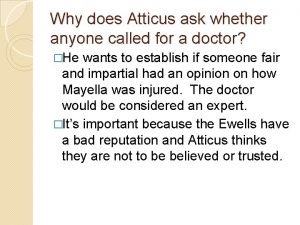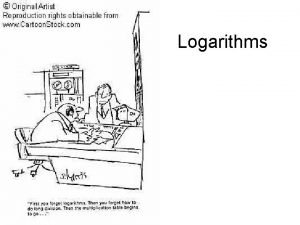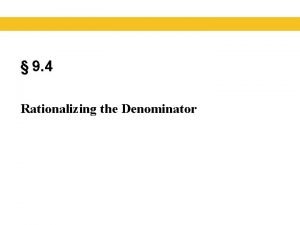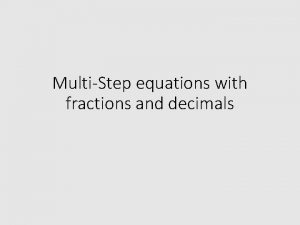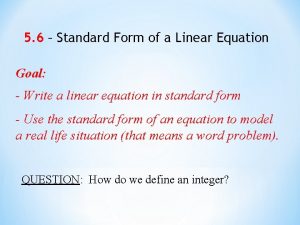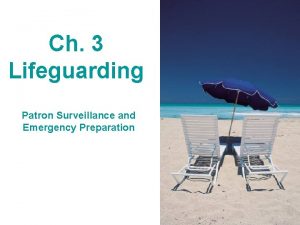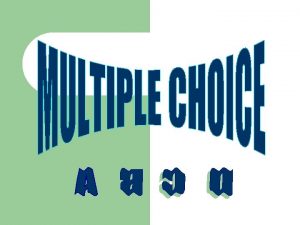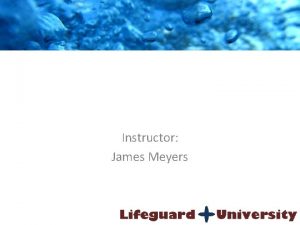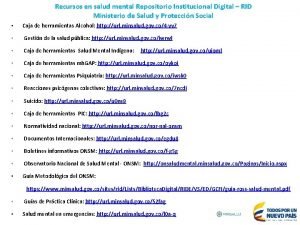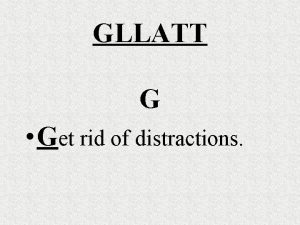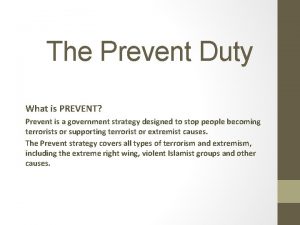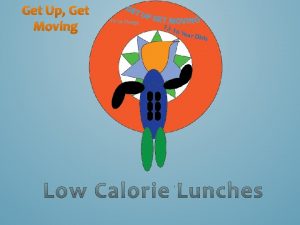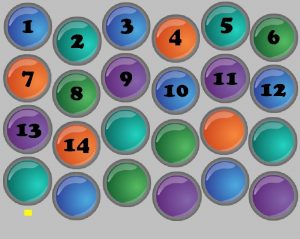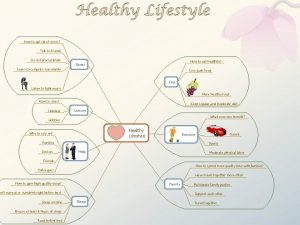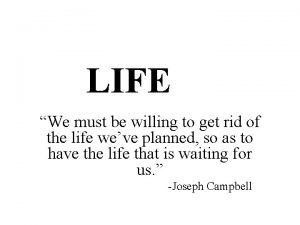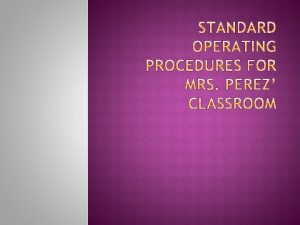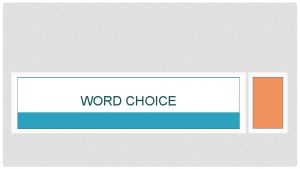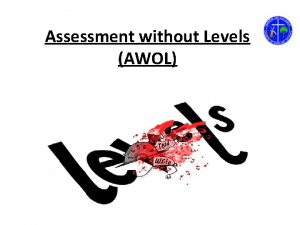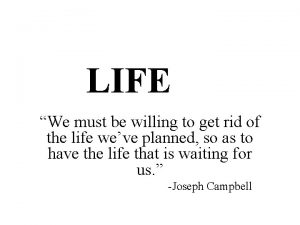Get rid of it Change it Prevent it

























- Slides: 25

Get rid of it? Change it? Prevent it? Understand it? Challenging behaviours in our practices. Krisztina Stefanik, Ph. D ELTE University Bárczi Gusztáv Faculty of Education for special needs krisztina. stefanik@barczi. elte. hu

Fundamental questions • What is „behaviour problem”? • What is the goal? • How can we reach it? • What can we do and what is not allowed to do? http: //wpmu. org • Who has problem?

A possible definition (Zarkowska és Clements, 1994; Volkmar & Wiesner, 2009) 1. The behaviour itself or its severity inappropriate given the person’s age and level of development 2. The behaviour is dangerous either to the person or others. 3. The behaviour constitutes a significant additional handicap for the person by interfering with the learning of new skills or by excluding the person from important learning opportunities. 4. The behaviour causes significant stress, impairs quality of life (family/school). 5. The behaviour is contrary to social norms.

Who has the problem? o Client o Parent o Professional • Who wins? Who loses? http: //www. randomcrates. com • The subjective factor

• Prevention, first of all, but… • it is impossible without understanding the causes of the behaviour • Who decides? o The client and the parents are our partners http: //silvieandmaryl. com What is our goal?

Individualised evidence-based practice client’s expectations PRACTICE Fits to scientific facts about the nature of condition Confirmed efficacy: better outcome clinical expertise

Searching for causes 1. Define precisely the behavior https: //www. youtube. com/watch? v=y 6 li. IQfb. Q 4 s https: //www. youtube. com/watch? v=Js. J 154 j. WRs. U 2. Assessment: careful observations (~ 2 weeks) and structured discussions with parents and key workers 3. Developing hypotheses 4. Systematic testing (intervention) 5. Evaluation An excellent example: the S. T. A. R. Model

S. T. A. R. MODEL (Zarkowska és Clements, 1994; NAS HAS, 2014) • Settings – Körülmények • Triggers – Kiváltók • Actions – Cselekedetek • Results – Eredmények

Settings • life events (e. g. loss, change, trauma, abuse); • current social climate (e. g. deprivation of relationships, conflict and hostility, lack of control, unnecessarily strict control); • current activities/occupational climate (e. g. level and type of stimulation, access to desired activities); • current physical climate (e. g. noise level, temperature, levels of lighting). • Internal and personal influences o E. g. anxiety states; sadness and depression; communication problems; pain; tiredness and poor physical health; disordered thinking; a lack of social understanding; an inability to occupy self…

S. T. A. R. MODEL (Zarkowska és Clements, 1994, NAS HAS, 2014) • Settings (external & internal) • Triggers (particular signals which set off specific actions) • Actions (frequency, intensity, length of time) • Results (the results the challenging behaviour appears to achieve)

STAR observation & analysis of behaviour


Small group practice

Common causes • Distress and/or anxiety because… o o o • • No experience of controlling others High expectations Too much control, no independence Low expectations Understandable/unexpected expectations Low level of organising unstructured time Less understanding of consequences Low impulse-control (executive dysfunctions) No alternatives (e. g. in communication) Pain/illness Comorbid psychiatric disorders Positive or negative excitement …

Be individualised! • There could be different behaviours with same background • There could be same behaviours with completely different background

Fundamental elements of behaviour management • High ethical standards • Instructional control o Most effective: communicate what s/he can do, o Not effective: „Don’t do…” • Communicate expectations on clear, individualised, understandable way • Use individualised motivation (POSITIVE reinforcement), o but never punishment (!) • Teaching new skills/behaviours/strategies in calm, one-to-one situation • Use comprehensive approach • Evaluate your results

From behaviour to understanding • • Age Mental age (level of intelligence) Level of language Level of understanding consequences behavioural cognitive

Reactive strategies • listen and reflect what is being communicated. • diversion • proximity control • introduce humour • stimulus change do or introduce something unexpected to break the behaviour cycle • sanctions (only if they are non aversive) • physical interventions (ONLY in some occasions where safe and rapid control of a situation is necessary)

Preventive strategies • Ecological manipulations o Settings, interactions, methods of teaching, noise, clutter etc. • Positive programming o teaching of skills, development, functional equivalent skills, functionally related skills, coping, rehearsal, tolerance. Social skills training, communication training, clear rules • Direct treatment o reinforcement schedules, stimulus control, stimulus satiation etc.

Intervetional techniques • Teaching alternative behaviour(s) • Operant behaviour modification (rewards; chainging, shaping etc. ) • Modelling • Ignoring (BE CAREFUL) • Deflection, distraction, offering an alternative • Desensitisation, stimulus satiation • Teaching calming and relaxation techniques • Modification of the environment • Prompting (BE CAREFUL) • Teaching cognitive strategies

These sanctions are NOT permissible • • • • Punishment in general & punishment of the whole group for the activities of individuals Shouting at a child. Humiliating, hurting or scaring a child Corporal punishment is not permitted under any circumstances. Fears or obsessions CANNOT be used in an aversive manner. Denial of food or drink. Force feeding Washing of soiled clothing or any activity that degrades the child Wearing of dirty clothing Seclusion, locking of doors, environmental restraint and withdrawal. Unproductive sanctions such as writing lines. Educational activities used as a sanction e. g. writing an essay, additional domestic chores etc. Preventing access to the telephone or complaints procedure

Small group practice 2 Choose a number from 1 to 13…

1. Low level of organising unstructured time 2. Less understanding of consequences 3. No alternatives (e. g. communication) 4. High expectations 5. Too much control, no independence 6. Distress and/or anxiety because… 7. No experience of controlling others 8. Positive or negative excitement 9. Low expectations 10. Understandable/unexpected expectations 11. Low impulse-control (executive dysfunctions) 12. Pain/illness 13. Comorbid psychiatric disorders Please, collect appropriate techniques to prevent challenging behaviours caused by the chosen problem!

• Do not think about an intentionally „bad” child/adult… • There is no hopeless case…

Thank you for your attention! krisztina. stefanik@elte. barczi. hu
 Get on get off get into get out of
Get on get off get into get out of Songs with poetic techniques
Songs with poetic techniques Who do dill and scout meet outside
Who do dill and scout meet outside How to get rid of ln
How to get rid of ln How to solve log problems
How to solve log problems How to get rid of sin
How to get rid of sin How to get rid of 1/2 in an equation
How to get rid of 1/2 in an equation Radiation pollution conclusion
Radiation pollution conclusion How to get rid of root in denominator
How to get rid of root in denominator How to get rid of bronchitis
How to get rid of bronchitis How to distribute fractions
How to distribute fractions Standard form equation example
Standard form equation example Get focused get results
Get focused get results Get up get moving quiz
Get up get moving quiz Get up get moving quiz
Get up get moving quiz Get up get moving quiz
Get up get moving quiz What is selection in pseudocode
What is selection in pseudocode Get up get moving quiz
Get up get moving quiz The molecules used to cut copy and connect the dna
The molecules used to cut copy and connect the dna What is the rid factor in lifeguarding
What is the rid factor in lifeguarding Rid utrecht
Rid utrecht Chlor test csn salts
Chlor test csn salts What excites lennie most about his dream life with george
What excites lennie most about his dream life with george Why does curley wear a vaseline-filled glove on one hand
Why does curley wear a vaseline-filled glove on one hand Rid factor lifeguarding
Rid factor lifeguarding Rid ministerio de salud
Rid ministerio de salud


